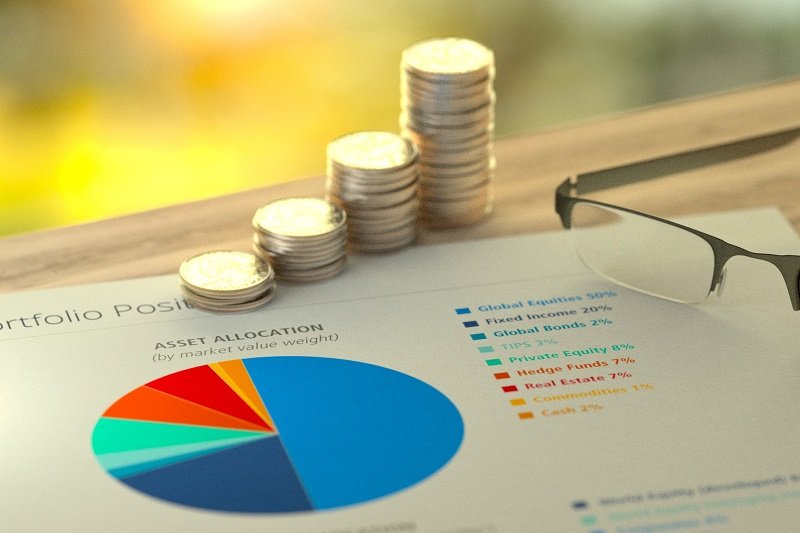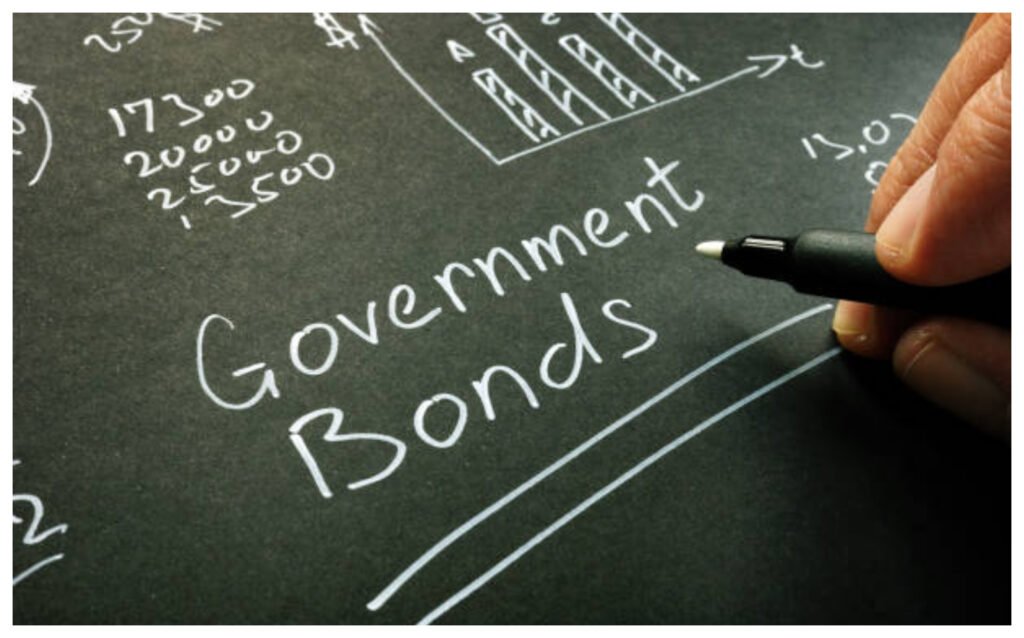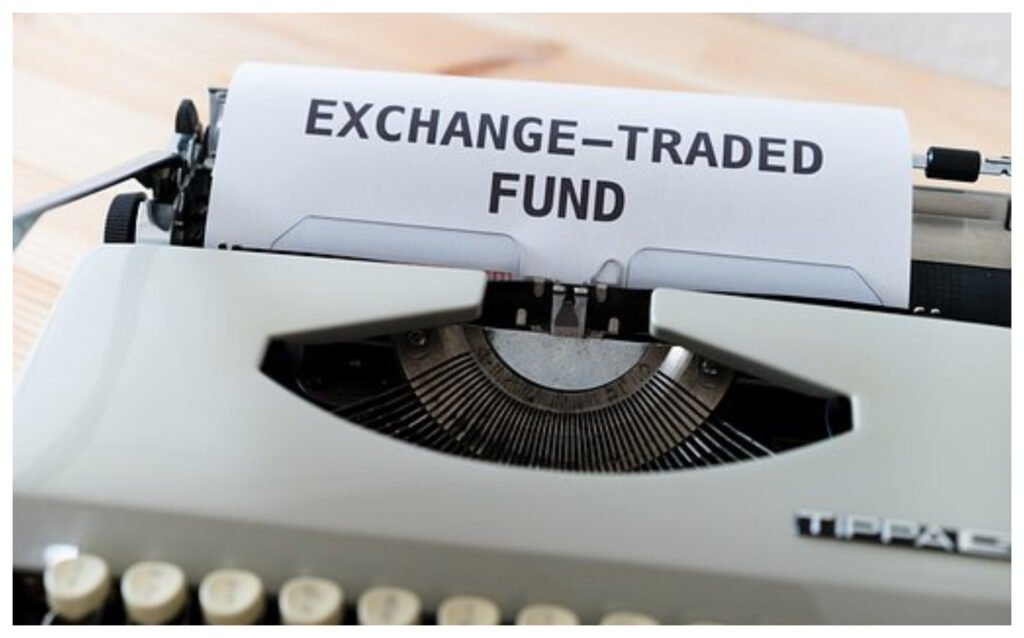Last Updated on June 27, 2025 by Rose Ann Palac
Navigating the world of investments during retirement can feel like setting sail in uncharted waters. For Australian retirees, finding the right balance between security and growth has never been more important in today’s unpredictable economic climate. You’re seeking not just investments that preserve your hard-earned savings, but options that provide reliable income to support your desired lifestyle in the years ahead.
With economic uncertainties continuing to influence financial markets, it’s crucial to understand the full spectrum of investment opportunities available to you. From the solid foundation of government bonds and term deposits to dividend-paying blue-chip stocks and real estate investment trusts, the range of choices can seem overwhelming.
But don’t worry – this comprehensive guide will walk you through various low-risk investment avenues suitable for Australian retirees. We’ll explore how each option can help safeguard your nest egg while potentially generating steady income. You’ll discover strategies for aligning investment choices with your personal risk tolerance and financial goals, allowing you to make confident decisions about your financial security.
Are you ready to find investment options that offer the right balance of security, income, and peace of mind for your retirement years? Let’s explore the possibilities together.

Range of Investment Options for Australian Retirees
In Australia’s complex financial landscape, retirees have access to numerous investment options that prioritize safety and stability. Each option comes with its own unique characteristics, potential benefits, and considerations. Let’s explore the most reliable choices for maximizing financial security during your retirement years.
Prefer to listen rather than read?
Blue-Chip Stocks With Dividend Reinvestment Plans (DRIPs)
Blue-chip stocks remain among the safest equity investments available to Australian seniors. These shares represent well-established, financially stable companies with proven track records of reliable performance and consistent dividend payments. Companies like Commonwealth Bank, Woolworths, and Telstra have demonstrated resilience during economic downturns, making them particularly attractive for retirement portfolios.
What makes blue-chip investments even more powerful is the option of Dividend Reinvestment Plans (DRIPs). These plans allow shareholders to automatically reinvest dividends to purchase additional shares instead of receiving cash payments. This reinvestment creates a compounding effect that can significantly enhance long-term wealth accumulation.
For example, if you initially invested $50,000 in a blue-chip stock with a 4% dividend yield and enrolled in a DRIP, your investment could potentially grow to over $110,000 after 20 years (assuming modest share price appreciation) without adding any new capital. This compounding mechanism helps your investments work harder for you during retirement.
Blue-chip stocks with DRIPs are particularly well-suited for retirees who have adequate income from other sources and can afford to reinvest their dividends for future financial security.

Real Estate Investment Trusts (REITs)
Real Estate Investment Trusts provide an excellent opportunity for Australian seniors to participate in the real estate market without the burdens of direct property ownership. These investment vehicles allow individuals to invest in diversified portfolios of income-generating properties without worrying about maintenance issues, tenant management, or large capital outlays.
Australian REITs typically invest in commercial properties such as office buildings, shopping centers, industrial facilities, and healthcare properties. By pooling funds from multiple investors, REITs can acquire, develop, and manage these income-producing assets professionally.
A key advantage of REITs is their tax structure. As pass-through entities, they distribute at least 90% of taxable income to shareholders as dividends. This requirement often results in attractive dividend yields, making REITs popular among income-focused retirees. Recent data shows that Australian REITs have delivered average distribution yields between 4-6%, outperforming many other fixed-income investments.
Additionally, REITs provide built-in diversification across different property types and geographical locations. This diversification helps spread risk and reduces the impact of poor performance in any single property. For retirees concerned about inflation, real estate investments often serve as a partial hedge, as property values and rental income typically increase during inflationary periods.

Defensive Equity Funds
Defensive equity funds provide exposure to stock markets while prioritizing capital preservation and downside protection. These professionally managed funds focus on investing in companies with strong fundamentals, stable earnings, and reliable cash flows.
Fund managers select stocks of companies that typically operate in defensive sectors such as healthcare, consumer staples, utilities, and telecommunications. These sectors tend to be less sensitive to economic cycles, providing greater stability during market volatility.
A distinctive feature of defensive equity funds is their emphasis on dividend-paying stocks with consistent distribution histories. These investments can provide a reliable income stream—particularly attractive for retirees living on fixed incomes. Many defensive funds have delivered annual yields of 3-5% in recent years, complemented by modest capital appreciation potential.
The lower volatility of defensive equity funds compared to broader market indices (such as the S&P/ASX 200) helps reduce overall portfolio risk. This stability creates peace of mind, especially during turbulent market conditions when preservation of capital becomes a primary concern.

Government Bonds
Government bonds represent one of the safest investment options for Australian retirees seeking maximum security. Backed by the Australian government, these fixed-income securities carry minimal risk of default and provide predictable income streams.
Available in two forms—direct bonds issued by the government or as investments in managed funds specializing in government securities—bonds offer flexibility to suit different investment approaches. The interest payments (coupons) typically occur semi-annually, creating a reliable income schedule that many retirees appreciate for budgeting purposes.
Australian Government Bonds (AGBs) have historically delivered yields ranging from 2% to 5%, depending on economic conditions and maturity periods. While these returns may seem modest compared to riskier investments, the primary benefit lies in their security and dependability—essential qualities for retirement portfolios.
For retirees concerned about inflation eroding purchasing power, inflation-linked bonds offer protection by adjusting both the principal and interest payments according to changes in the Consumer Price Index (CPI). This feature helps maintain the real value of investments during inflationary periods.

Term Deposits
Term deposits continue to be a cornerstone investment option for risk-averse Australian seniors. These straightforward financial products involve depositing funds with a bank or financial institution for a predetermined period, typically ranging from one month to five years.
During this period, your money remains locked away, earning a fixed interest rate that’s guaranteed regardless of market fluctuations. This certainty provides valuable peace of mind, knowing exactly how much return your investment will generate.
The Australian government’s Financial Claims Scheme provides additional security, guaranteeing deposits up to $250,000 per account holder per authorized deposit-taking institution (ADI). This government backing makes term deposits among the safest investment vehicles available.
While current interest rates on term deposits (typically 3-4.5% as of early 2025) may not match potential returns from growth investments, they offer complete capital protection—an attractive feature for retirees prioritizing wealth preservation over growth.
For maximum benefit, consider creating a “ladder” of term deposits with staggered maturity dates. This strategy provides periodic access to your funds while maintaining competitive interest rates across your investments.

High-Interest Savings Accounts
High-interest savings accounts offer Australian seniors a combination of security, accessibility, and competitive returns. These accounts typically pay higher interest rates than standard transaction accounts, making them excellent vehicles for emergency funds or short-term savings goals.
To qualify for premium interest rates (currently ranging from 3% to 4.5% p.a.), these accounts often have specific conditions. You might need to deposit a minimum amount monthly, maintain a minimum balance, or limit withdrawals. However, these requirements also help discourage impulsive spending, supporting your savings discipline.
Unlike term deposits that lock away your funds, high-interest savings accounts offer flexibility to access your money when needed, though some notice periods may apply for larger withdrawals. This liquidity is particularly valuable for managing unexpected expenses during retirement.
The Financial Claims Scheme’s $250,000 government guarantee applies to these accounts as well, providing the same level of protection as term deposits. This security, combined with reasonable returns and accessibility, makes high-interest savings accounts an essential component of a balanced retirement investment strategy.

Exchange-Traded Funds (ETFs)
Exchange-Traded Funds have revolutionized investing for Australian retirees by offering diversification, tax efficiency, and lower management costs. These investment vehicles provide exposure to entire markets or specific sectors through a single transaction on the Australian Securities Exchange (ASX).
ETFs are particularly advantageous for retirees because they require less active management than individual stock portfolios. By tracking established market indices (like the ASX 200), commodity prices, or bond markets, ETFs provide instant diversification across dozens or hundreds of different securities.
The cost-effectiveness of ETFs is striking, with management expense ratios typically ranging from 0.1% to 0.5%—significantly lower than most actively managed funds that charge 1-2%. These lower fees mean more of your investment returns stay in your portfolio, enhancing long-term performance.
For income-focused retirees, dividend ETFs specifically target companies with strong dividend histories, potentially delivering yields of 4-6% annually. Some even offer dividend reinvestment options, allowing for compounding growth over time.
The simplicity of buying and selling ETFs through regular brokerage accounts makes them accessible to investors of all experience levels. This ease of trading, combined with their inherent diversification and cost advantages, makes ETFs worthy of consideration in most retirement portfolios.

Managed Funds
Managed funds offer Australian retirees access to professional investment expertise without requiring substantial starting capital. These pooled investment vehicles bring together money from multiple investors, creating economies of scale that individual investors could rarely achieve on their own.
Fund managers handle all aspects of investment selection, monitoring, and adjustment based on changing market conditions and research insights. This professional oversight is particularly valuable for retirees who prefer not to manage their investments actively or lack the time and expertise to navigate complex financial markets.
Modern managed funds offer remarkable diversity, covering virtually every asset class, geographical region, and investment style. Conservative or balanced funds, which maintain a mix of growth assets (shares and property) and defensive assets (fixed income and cash), are particularly popular among retirees seeking moderate growth with reasonable stability.
While management fees (typically 0.5%-1.5% annually) represent an ongoing cost, many retirees find value in the professional management, administrative convenience, and potential for superior returns that these funds can provide. The best fund managers have consistently outperformed market benchmarks over extended periods, even after accounting for fees.
Tools for Managing Your Investments
The digital revolution has transformed how Australian retirees can monitor and manage their investments. Today’s technology offers unprecedented access to information, analysis tools, and execution platforms that simplify the investment process.
Investment Tracking Apps
Modern investment tracking applications allow you to monitor your portfolio’s performance in real-time on your smartphone or tablet. These user-friendly tools consolidate information from multiple investment accounts, providing a comprehensive overview of your financial position.
Many apps offer features like automatic categorization of investments, performance comparison against benchmarks, dividend tracking, and customized alerts for significant market movements. Some even provide visualization tools that make complex financial data easier to understand.
Popular investment tracking apps in Australia include Sharesight, Stocklight, and features within most bank’s mobile applications. These tools help you stay informed about your investments without requiring constant attention to financial news or market movements.
Online Brokerage Platforms
Online brokerage platforms have democratized investing by reducing costs and improving accessibility. These platforms allow you to buy and sell investments directly, often at a fraction of the cost charged by traditional brokerages.
Beyond execution capabilities, most online brokers now provide educational resources, market research, and analytical tools to help inform your investment decisions. Some offer retirement planning calculators and portfolio analysis features specifically designed for retirees.
Australian platforms like CommSec, NABtrade, and SelfWealth have made investing more accessible than ever, with competitive fee structures and intuitive interfaces designed for investors of all experience levels.
Financial Planning Software
Comprehensive financial planning software helps visualize how today’s investment decisions might affect your future financial security. These tools allow you to create detailed retirement projections based on various scenarios and assumptions.
By adjusting variables like investment returns, inflation rates, life expectancy, and spending patterns, you can see how different investment strategies might impact your long-term financial position. This insight helps make more informed decisions aligned with your retirement goals.
Many financial advisors provide access to professional-grade planning software as part of their services, while consumer versions like eMoney and Fincentral offer similar capabilities for self-directed investors.
Robo-Advisors
Robo-advisors combine algorithmic investment management with minimal human intervention to provide low-cost investment solutions. After completing a questionnaire about your financial situation, goals, and risk tolerance, these platforms automatically create and manage a diversified portfolio tailored to your needs.
This technology-driven approach typically comes with significantly lower fees than traditional financial advice, making professional-grade portfolio management accessible to more retirees. The automated nature of these services removes emotional decision-making from the investment process, potentially leading to better long-term outcomes.
Australian robo-advisors like Stockspot, Six Park, and Raiz have gained popularity for their straightforward approach and transparent fee structures, typically charging between 0.25% and 0.85% annually—substantially less than many managed funds.
Market Analysis Tools
Sophisticated market analysis tools, once available only to professional investors, are now accessible to retail investors. These platforms provide comprehensive data, research reports, and analytical capabilities to help inform investment decisions.
Tools like stock screeners allow you to filter investment opportunities based on specific criteria such as dividend yield, price-to-earnings ratio, or market capitalization. Technical analysis features help identify potential entry and exit points for investments based on historical price patterns.
Many financial websites and brokerage platforms offer these features as complimentary services or at nominal costs. For retirees interested in taking a more active role in their investment decisions, these tools provide valuable insights without requiring advanced financial expertise.
Conclusion
Australian retirees have access to a diverse range of investment options designed to provide financial security and steady income during retirement years. From traditional fixed-income investments like government bonds and term deposits to more growth-oriented options like blue-chip stocks and ETFs, the key is building a balanced portfolio aligned with your individual needs and risk tolerance.
Remember that diversification across different asset classes and investment types remains one of the most effective strategies for managing risk while pursuing reasonable returns. Consider working with a qualified financial advisor to develop a personalized investment plan that addresses your specific retirement goals, income needs, and time horizon.
By thoughtfully selecting from the investment options discussed in this article, you can create a secure foundation for your retirement finances—one that provides both the stability and income necessary to enjoy this rewarding phase of life.
Have you already incorporated any of these investment options into your retirement portfolio? Which strategies seem most appropriate for your personal situation? We’d love to hear about your experiences and questions in the comments below!
FAQ on Retiree Investment Options
- What are the best low-risk investment options for Australian retirees?
- The safest investment options offering security and stability for Australian retirees include high-interest savings accounts, term deposits, government bonds, and real estate investment trusts (REITs). Each provides different benefits in terms of liquidity, returns, and tax implications. Your ideal mix will depend on your specific retirement needs, time horizon, and comfort with different types of investments.
- Why do Australian retirees typically prefer low-risk investments?
- Many Australian retirees prioritize capital preservation over growth potential. After spending decades building their nest egg, the focus naturally shifts toward protecting those assets from significant market downturns. Low-risk investments offer peace of mind through predictable returns and reduced volatility, which helps ensure a reliable income stream throughout retirement years.
- How do low-risk investments benefit a retiree’s overall financial strategy?
- Different low-risk investments give you a solid foundation for a retiree’s investment portfolio, offering stability and protection against significant market downturns. They play a crucial role in a balanced investment approach.
- Can low-risk investments provide sufficient income for retirees?
- Yes, with proper planning and sufficient capital, low-risk investments can generate meaningful income. While individual yields may be modest (typically 2-5% annually), a diversified portfolio of government bonds, dividend-paying stocks, and REITs can create a reliable income stream. Many retirees combine these with their superannuation payments and Age Pension benefits to maintain their desired lifestyle.
- Why are government bonds considered particularly safe for retirees?
- Government bonds carry the backing of the Australian federal government, making them among the safest investments available. The government’s taxation powers and economic stability mean there’s virtually no risk of default on these obligations. This security comes with the trade-off of typically lower returns compared to corporate bonds or equities, but many retirees find this exchange worthwhile for the peace of mind provided.
- How do term deposits work best in a retirement portfolio?
- Term deposits work well as part of a “laddering” strategy, where you stagger maturity dates to provide periodic access to funds while maintaining competitive interest rates. For example, you might divide your investment across 1-year, 2-year, 3-year, 4-year, and 5-year terms. As each deposit matures, you can either use the funds for living expenses or reinvest for another term, depending on your needs and current interest rates.
References
- Australian Securities and Investments Commission. (2024). MoneySmart: Investing for income. Retrieved from https://moneysmart.gov.au/investment-products/investing-for-income
- Reserve Bank of Australia. (2024). Statement on Monetary Policy – February 2024. Retrieved from https://www.rba.gov.au/publications/smp/2024/feb/
- Australian Taxation Office. (2024). Super and retirement. Retrieved from https://www.ato.gov.au/individuals/super/
- ASX. (2024). Australian Investor Study. Retrieved from https://www2.asx.com.au/blog/australian-investor-study
- Australian Government Financial Claims Scheme. (2024). About the Financial Claims Scheme. Retrieved from https://www.fcs.gov.au/about-apra-protected-accounts
Disclaimer:
We are not investment advisors. Our content is intended for guidance and educational purposes only. Before making any investment decisions, it is strongly recommended that you seek advice from a licensed financial advisor or conduct thorough research to ensure that your choices align with your individual financial goals and risk tolerance.
Please remember that all investments carry inherent risks, and past performance is not indicative of future results.



